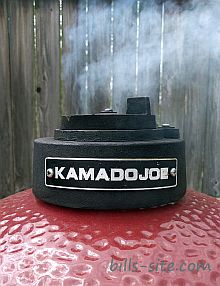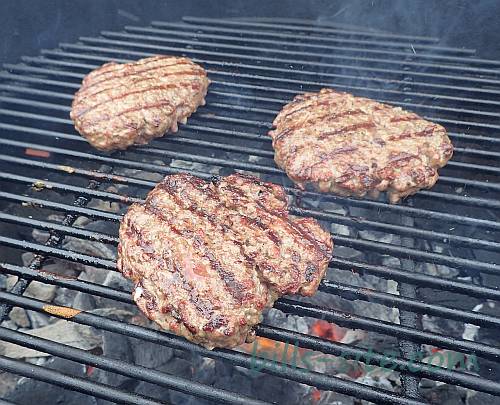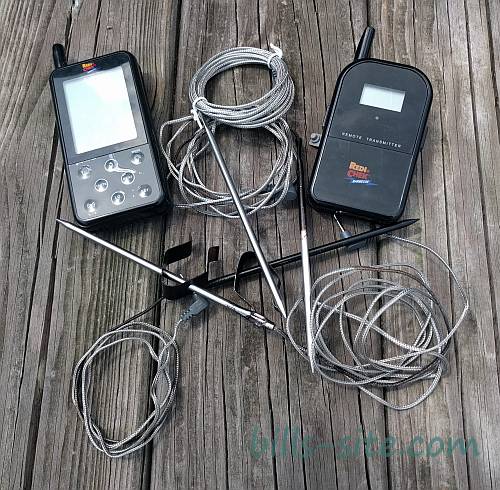 Today we’re going to talk about an essential part of making our Kamado Joe burgers — the charcoal fire. Sure, you can dump some charcoal into the firebox and go. But, with some knowledge and patience, you can optimize that charcoal fire to make your best Kamado Joe burgers ever.
Today we’re going to talk about an essential part of making our Kamado Joe burgers — the charcoal fire. Sure, you can dump some charcoal into the firebox and go. But, with some knowledge and patience, you can optimize that charcoal fire to make your best Kamado Joe burgers ever.
Kamado Joe Burgers – The Fire
Be sure to check out Part I of this series, titled Kamado Joe Burgers – Grilling Tools. We talked about those essential items we use in our day-to-day burger grilling. So now, on to Part II, we’re calling today’s posting, Kamado Joe Burgers – The Fire.
Yeah, you know how your Kamado works. You read and memorized the owner’s manual. So we’re not repeating any of that advice here.
But, let’s review a few things that we should keep in mind for grilling up those perfect backyard Kamado Joe burgers.
Fire and thermodynamics
Understanding a tad bit about the inner workings of fire, heat, and temperature and their relationships to the cooking of our food might just give you the edge over that guy next door. No, we won’t get into much geeky science stuff here.
Cooking and grilling is about transferring energy. It’s about encouraging chemical reactions in our food to alter the flavors and textures through the application of heat energy.
In our Kamado cookers, we have our heat source, that searing hot lump charcoal fire.
We know fire is hot, but why? We’ll fire is hot because energy is released when the chemical bonds in that charcoal fuel source are altered during the process of combustion.
When we’re out grilling on our Kamados’, heat is transferred from that hot lump charcoal to our food by one of three methods.
Kamado Joe Burgers – Heat Radiation
Radiation: this is cooking by the transfer of heat by direct exposure to that heat source. Thermal radiation is electromagnetic energy waves, visible light and infrared, emitted by the hot charcoal. The thermal radiation carries energy, which is converted to heat when it hits another object — and that energy is absorbed by that object.
Radiation energy from hot charcoal and is absorbed by those raw meat patties, chemically changing them into the soon to be tasty burgers that you can hear sizzling away on those grill grates.
Radiation energy also quickly heats up your hands as you reach in to flip those burgers. We use these heavy-duty heat resistant gloves as we work the burgers. We talked about them in Part I — Kamado Joe Burgers – Grilling Tools. No rushing the burger flipping process. No broken burgers.
Kamado Joe Burgers – Heat Conduction
Conduction: is like cooking bacon in your cast-iron skillet. Conduction is the transfer of heat through solid objects, such as your cast-iron skillet. Heat is transferred by direct contact with that heat source.
So, your grill grates are heated by radiation. Then through conduction, heat from the grill grates is transferred to those burgers, creating those much sought after grill marks.
Kamado Joe Burgers – Heat Convection
Convection: is cooking by airflow. When you’re grilling, dome lid down, hot air circulates within the cooking chamber. This circulation of heated air is convection. Convection will cook the exterior of the food. Conduction will move the heat from the exterior to the interior of the food.
Kamado Joe Burgers – Temperature
Temperature: is the average of all those energy types, radiation, conduction, and convection seen by your dome thermometer. Temperature is a measure of heat energy.
Because we’re at the grilling burgers, we are mostly concerned with radiation and conduction and not so much with convection. Our burgers only remain on the grill grate for approximately 8 to 12 minutes per inch of thickness at 400 °F (205 °C).
We like to cook our Kamado Joe burgers at temperatures between 400 and 425 °F (205 to 218 °C). Though if the temperature inches higher, don’t sweat it.

The surface temperature of your pile of glowing red hot lump charcoal could be well north of 1000 °F (540 °C). This is dependent on many things, some of which include airflow, the amount of charcoal, dome up or dome down. From the surface of the charcoal, the heat energy rapidly dissipates in all directions, from that scorching hot temperature, down to our dome thermometer reading of 400 (205 °C).
Your grill grate temperature will be somewhat higher than the dome thermometer temperature.
Read the product manuals before making a selection.
Kamado Joe Burgers – Grilling Thermometers
We use a Maverick ET-733 Redi-Chek dual probe wireless thermometer for our day-to-day grilling and low-and-slow smoking. The Maverick ET-733 uses four easy to find AAA batteries, nothing exotic. It also has user replaceable temperature probes, which you should have one or two on hand. With over 1300 customer reviews, it’s evidence of a good product. Check out the current pricing, read through some of those customer reviews, right here on Amazon. We picked up our Maverick ET-733 back in July 2014 and it’s still going strong.

Kamado Joe Burgers – Charcoal Placement
So, with the knowledge we have pick up so far, one more thing about charcoal. We want no uneven charcoal piles. A level charcoal pile makes for the even application of thermal heat radiation. No part of the charcoal pile is significantly closer to the food than any other part.
Pay attention to the space between the charcoal and the grill grate lower position. Try to keep it the same for all of your burger cooks. In our own Kamado cooking experiences, we like to have the charcoal 5 inches below the grill grate when the grill grate is in the lower position. Your Kamado cooking experience and preferences may be different.
Kamado Joe Burgers – Air Flow
Now let’s talk about the air vents.
The Kamado is an closed system with adjustable air intake and exhaust vents.
The bottom vent controls how much air can enter the cooking vessel.
The top vent controls or throttles the exhaust and it also controls how much air does enter that bottom vent. Our own Kamado Joe has a daisy wheel to fine tune the top vent setting.
Think of air vents this way. You’re want to binge watch the Terminator series down at the local theater — for that immersive experience. When you get there, you find a long line and the front doors wide open. But, there are only a few open seats available. Though the front door is wide open, only a few can make it in. Everyone else needs to go on about their day or wait until someone else leaves.
Give your Kamado 30 minutes to an hour to stabilize at the target temperature. The ceramic mass absorbs, retains, and radiates heat, think space shuttle tiles here. That is one of those features we all love about or Kamado grills — the ability to retain that heat for even cooking.
Kamado Joe Burgers – Maillard Reaction
When you’re looking for good coloring on your burgers, set your grilling grate in the lower position, closer to the radiated heat energy of the charcoal pile. That Maillard reaction is responsible for that browning and those complex flavors we all love in our grilled meats. More on the Maillard reaction in a future post.
The grill grate in the upper position for breads, veggies, and smoking foods for a more controlled cooking.
Charcoal Stockpiling For Later
We’re not repeating that sage charcoal advice found in your Kamado owner’s manual.
But …
In those early fall months, that lump charcoal selection can go from plenty on hand to zero-inventory in a weekend. After that last-day-of-the-summer holiday cookout, those Mega-marts and Home Emporiums need to make room for Halloween costumes, Christmas trees, and show shovels.
Those Amish built faux fireplaces replaced your lump charcoal selection. Fire starters disappear. The Home Emporium grilling aisle looks like the Mega-mart discount rack — barren of anything you actually might need.
Calculate what you might need. Stock up on your favorite brands when it goes on sale. You’ll be prepared for that cold weather lump charcoal shortage and any power-outage cooking that might come your way. Around here, grilling and smoking happens 12 months out of the year.
So find what you like and keep it on hand and avoid any of those mail-order shipping charges.
Charcoal Ignition
Like the wintertime lump charcoal shortages, building up a several month supply of charcoal starters might be in your best interest.
With charcoal starters, you do have options. We have used everything from big-name charcoal starters, to paraffin cubes, to paper towels saturated in cooking oil.
● Kamado Joe Burgers – The Tools
Check out my other Kamado Joe and JoeTisserie recipes and links here on my Outdoor Eats page.
